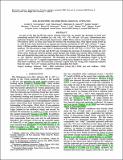Por favor, use este identificador para citar o enlazar a este item:
http://hdl.handle.net/10261/2620COMPARTIR / EXPORTAR:
 SHARE
BASE SHARE
BASE
|
|
| Visualizar otros formatos: MARC | Dublin Core | RDF | ORE | MODS | METS | DIDL | DATACITE | |

| Campo DC | Valor | Lengua/Idioma |
|---|---|---|
| dc.contributor.author | Goicoechea, Javier R. | - |
| dc.contributor.author | Cernicharo, José | - |
| dc.contributor.author | Daniel, Fabien | - |
| dc.contributor.author | Barlow, Michael J. | - |
| dc.contributor.author | Swinyard, Bruce M. | - |
| dc.contributor.author | Lim, Tanya L. | - |
| dc.contributor.author | Viti, S. | - |
| dc.contributor.author | Yates, J. | - |
| dc.date.accessioned | 2007-12-27T16:06:58Z | - |
| dc.date.available | 2007-12-27T16:06:58Z | - |
| dc.date.issued | 2006-03-03 | - |
| dc.identifier.citation | arXiv:astro-ph/0603077v1 | en_US |
| dc.identifier.uri | http://hdl.handle.net/10261/2620 | - |
| dc.description | Accepted in ApJ letters, 2006 March 2 | en_US |
| dc.description.abstract | As part of the first far-IR line survey towards Orion KL, we present the detection of seven new rotationally excited OH Lambda-doublets (at 48, 65, 71, 79, 98 and 115 um). Observations were performed with the Long Wavelength Spectrometer (LWS) Fabry-Perots on board the Infrared Space Observatory (ISO). In total, more than 20 resolved OH rotational lines, with upper energy levels up to 620 K, have been detected at an angular and velocity resolutions of 80$'' and 33 km s^-1 respectively. OH line profiles show a complex behavior evolving from pure absorption, P-Cygni type to pure emission. We also present a large scale 6' declination raster in the OH ^2\Pi_3/2 J=5/2^+-3/2^- and ^2\Pi_3/2 J=7/2^-5/2^+ lines (at 119.441 and 84.597 um) revealing the decrease of excitation outside the core of the cloud. From the observed profiles, mean intrinsic line widths and velocity offsets between emission and absorption line peaks we conclude that most of the excited OH arises from Orion outflow(s), i.e. the ``plateau'' component. We determine an averaged OH abundance relative to H_2 of X(OH)=(0.5-1.0)x10^-6, a kinetic temperature of 100 K and a density of n(H_2)=5x10^5 cm^-3. Even with these conditions, the OH excitation is heavily coupled with the strong dust continuum emission from the inner hot core regions and from the expanding flow itself. | en_US |
| dc.format.extent | 747560 bytes | - |
| dc.format.mimetype | application/pdf | - |
| dc.language.iso | eng | en_US |
| dc.relation.isversionof | Preprint | - |
| dc.rights | openAccess | en_US |
| dc.subject | Infrared: ISM | en_US |
| dc.subject | ISM: individual (Orion KL) | en_US |
| dc.subject | ISM: jets and outflows | en_US |
| dc.subject | ISM: molecules | en_US |
| dc.subject | Radiative transfer | en_US |
| dc.title | Far-IR Excited OH Lines from Orion KL Outflows | en_US |
| dc.type | preprint | en_US |
| dc.description.peerreviewed | Peer reviewed | en_US |
| dc.type.coar | http://purl.org/coar/resource_type/c_816b | es_ES |
| item.openairecristype | http://purl.org/coar/resource_type/c_816b | - |
| item.fulltext | With Fulltext | - |
| item.cerifentitytype | Publications | - |
| item.openairetype | preprint | - |
| item.languageiso639-1 | en | - |
| item.grantfulltext | open | - |
| Aparece en las colecciones: | (CFMAC-IEM) Artículos | |
Ficheros en este ítem:
| Fichero | Descripción | Tamaño | Formato | |
|---|---|---|---|---|
| 17.pdf | 730,04 kB | Adobe PDF |  Visualizar/Abrir |
CORE Recommender
Page view(s)
277
checked on 18-abr-2024
Download(s)
125
checked on 18-abr-2024
Google ScholarTM
Check
NOTA: Los ítems de Digital.CSIC están protegidos por copyright, con todos los derechos reservados, a menos que se indique lo contrario.
